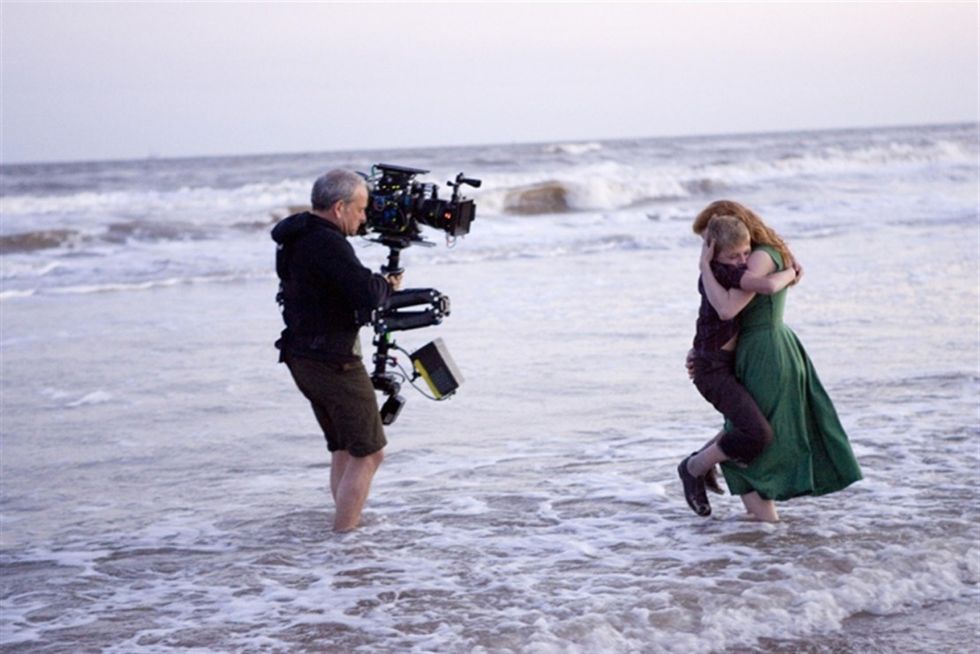Explaining the Difference Between Anamorphic and Spherical Lenses
Can you spot the differences between anamorphic and spherical lenses?

It's not easy deciding on the look of your movie, TV show, or short. Not only do the director and cinematographer have to discuss their strategies, but you also have to take into account where this creation will live and how the audience will react to certain images.
No matter what, at some point, you'll have to choose between anamorphic and spherical lenses. Now, both types of lenses produce different image characteristics, but if you can't tell the difference between them, how will you know which fits the ideas you had for your story? Both also have different practical constraints which must be considered too, which could change production days and cost money in the budget.
If you learn the basics of both, you can make the appropriate choices and have a wealth of knowledge going forward. To do that, we'll look at examples of cinematography from popular films and try to provide some insight into why the lens a cinematographer chooses can have a profound impact on how the audience interprets a film.
Check out this video from In Depth Cine, and let's talk after the jump.
Explaining the Difference Between Anamorphic and Spherical Lenses
To understand the differences, we have to look at the basics between the lenses right up front. There are two classes of lenses that are typically used in production: spherical and anamorphic.
What Are Spherical Lenses?
Spherical lenses have existed since the dawn of cinema. They are the assumed lens type, unless someone says something else. Spherical lenses project images onto the sensor without affecting their aspect ratio. These kinds of lenses are usually split into two basic categories, prime lenses and zoom lenses. When it comes to cost, they can be very expensive or relatively cheap.
Spherical lenses are faster with lower T-stops, so if you are shooting in low-light conditions, consider spherical lenses, or stronger light sources.
In terms of a cinema example, The Tree of Life shot on spherical Arri/Zeiss Master Primes with a 1.85:1 aspect ratio.

What Are Anamorphic Lenses?
Anamorphic lenses are a fairly new invention that projects a compressed version of the image. They require stretching in post-production or at the projector to be properly displayed for the audience.
There were designed so that wide-format images could utilize all of the standard 35 mm frames. Without it, these images would be cropped. They also improve image quality by enhancing vertical resolution and reducing the appearance of grain. Anamorphic lenses are incredibly expensive.
In terms of cinema examples, There Will Be Blood was shot on C-series and E-series Panavision anamorphic lenses with a 2.40:1 aspect ratio.

The Difference Between Anamorphic and Spherical Lenses
Aside from the image side and cropping, the bokeh is different for each of these lenses.
Spherical lenses produce circular, out-of-focus elements. Anamorphic lenses have an oval-shaped bokeh that will also affect the look of lens flares. When it comes to image sharpness, spherical lenses will have an advantage, while anamorphic will have a softer look along the edges.
It also affects aspect ratios. Traditional spherical aspect ratios are more square. Common Super 35 format aspect ratios are 1.33:1 and 1.85:1. Anamorphic lenses produce a wider aspect ratio, such as 2.35:1 or 2.39:1.
How to Choose Your Lenses
At the end of the day, you're choosing which look will make the story shine. So pick carefully, and watch a lot of movies to see which ones share a look you think you may want to capture for your story. These choices can affect mood, tone, and even the way we understand the genre.
Let me know what you think of each in the comments.
Source: In Depth Cine
















